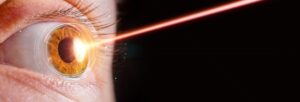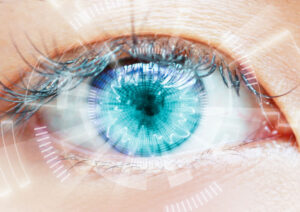
You may have considered getting LASIK surgery when once again, you can’t find your glasses. Or when they break on your way in to work. Have you noticed, it is hard to repair your glasses when you need them on to fix them? So many frustrations. Just to be able to see. Contacts are great and they look good. Once you get them in. Watch out for wind, or tears, or an errant eyelash. What everyone does agree on, is that seeing is great while reading, watching a movie, walking around a park, or driving. LASIK surgery is not for everyone, but for some, it has made a substantial difference in the quality of life. Successful recipients have their vision from the moment they wake up in the morning until they close their weary eyes at night. Initial consultations are free. The ability to use flex spending for LASIK surgery is a viable financial solution for many individuals seeking better vision.
Financial Costs of Corrective Lenses
Over time, the costs of annual eye exams, eyeglasses, and contacts, add up. Contacts need to be consistently replaced. Generally, there are six lenses in a box of contacts, which vary in price according to the lenses’ type and prescription. For those people, able to wear disposable contacts, continually buying new boxes is a necessity.
The average cost of a new pair of prescription glasses begins at $200. Older individuals, often need bifocals, to see close up, and also distance. Many people over the age of 50 are choosing to wear progressive lenses, or no-line bifocals, which allow them to see near, far, and everything in between. Unfortunately, quality progressives cost twice as much as regular prescription glasses. Glasses are expensive when selecting high quality lens material and frames. Anti-reflective, anti-scratch, and anti-fog coatings are all highly desirable to eyeglass wearers, but significantly increase the cost.
Risks Associated with Contact Lenses
According to the U.S. Food and Drug Administration (FDA), wearing contact lenses can put individuals at risk for both corneal ulcers, open sores in the cornea’s outer layer, and eye infections. Eye irritants or infections may be indicated by:
- Excessive discharge
- Light sensitivity
- Pain
- Burning or itching
- Redness
- Blurred vision
The risks accompanying long-term use of contact lenses increase when they are not used correctly, and most wearers, at some point or another, breach proper use. Your hands need to be washed every time you put them in, tap water should never be used for storage, and sleeping with your contacts in, significantly increases the risk of infection. Unfortunately, infections happen, even when the wearer does everything right.
LASIK Surgery
The goal of LASIK surgery is to reduce your reliance on corrective lenses, whether it be eyeglasses or contact lenses. Although not guaranteed, most people will obtain 20/20 vision or better, and the bulk of these will already be seeing 20/40 vision, or better, within hours of their procedure The majority of individuals report minimal pain, or discomfort. Dr. Steven W. Stetson, Medical Director of Diamond Vision, has performed more than 40,000 refractive surgeries. He performs laser vision correction only on individuals who have a strong possibility of attaining freedom from dependence on corrective lenses. The procedure takes only 15 minutes and both eyes are usually done on the same appointment. Most LASIK patients return to work immediately after surgery. LASIK surgery needs to be carefully considered. It will impact the way you see for the rest of your life.
Using Flex Spending or HSA for LASIK Surgery
The cost of LASIK eye surgery is one of the many factors to take into consideration. More and more individuals are spreading out the cost of the corrective surgery by using pretax dollars in their Flex Spending Account (FSA) or Health Savings Accounts (HSA). The federal government has approved traditional and custom LASIK surgical procedures as FSA and HSA eligible medical expenses. After the LASIK surgical procedure, receipts are submitted to the FSA administrator for reimbursement.
An FSA is employer sponsored. This plan allows you to have the employer set aside a predetermined amount from your paycheck, that is then deposited in an account that is protected from federal and state taxes. This account gives employees pretax dollars, up to $2,500 per individual, that help pay for medical or extra costs not covered by insurance. The dollars deposited in an FSA must be used before the end of the plan year, or are forfeited. You are able to fund a portion of LASIK eye surgery rather than lose the money.
Anyone can set up an HSA, regardless of employment status, but your employer may also provide one. However, in order to qualify, you must be enrolled in a high-deductible insurance plan (minimum $1,250 per year for individual and $2500 for family plan). You may contribute tax free up to $3,350 as an individual, and unlike an FSA, you own the plan so it goes with you if you change jobs. Further, your HSA contributions roll over to the following year and are not lost if not used.
If you are considering setting aside pretax money in an FSA for laser vision correction, schedule a free consultation today with Dr. Stetson at Diamond Vision to determine if you are a good candidate for the surgical procedure. If you want more information contact our Atlanta LASIK Eye Surgery Center.
Contact Us
If you have more questions about LASIK procedures, get in touch with us.
Related Blogs

Who Should Not Have Laser Eye Surgery
Laser eye surgery, commonly known as LASIK (Laser-Assisted In Situ Keratomileusis), has revolutionized the world of vision correction. It’s a procedure that has enabled millions

LASIK eye surgery: What is LASIK and how does it work?
What Is LASIK? Experts categorize LASIK as a refractive eye surgery in which lasers are used to correct vision problems. LASIK corrects several refractive errors,

Everything You Need To Know About The Lipiflow Treatment
LipiFlow is often referred to as a ground-breaking technology that is able to treat dry eye issues caused by meibomian gland dysfunction, or MGD. Experts
